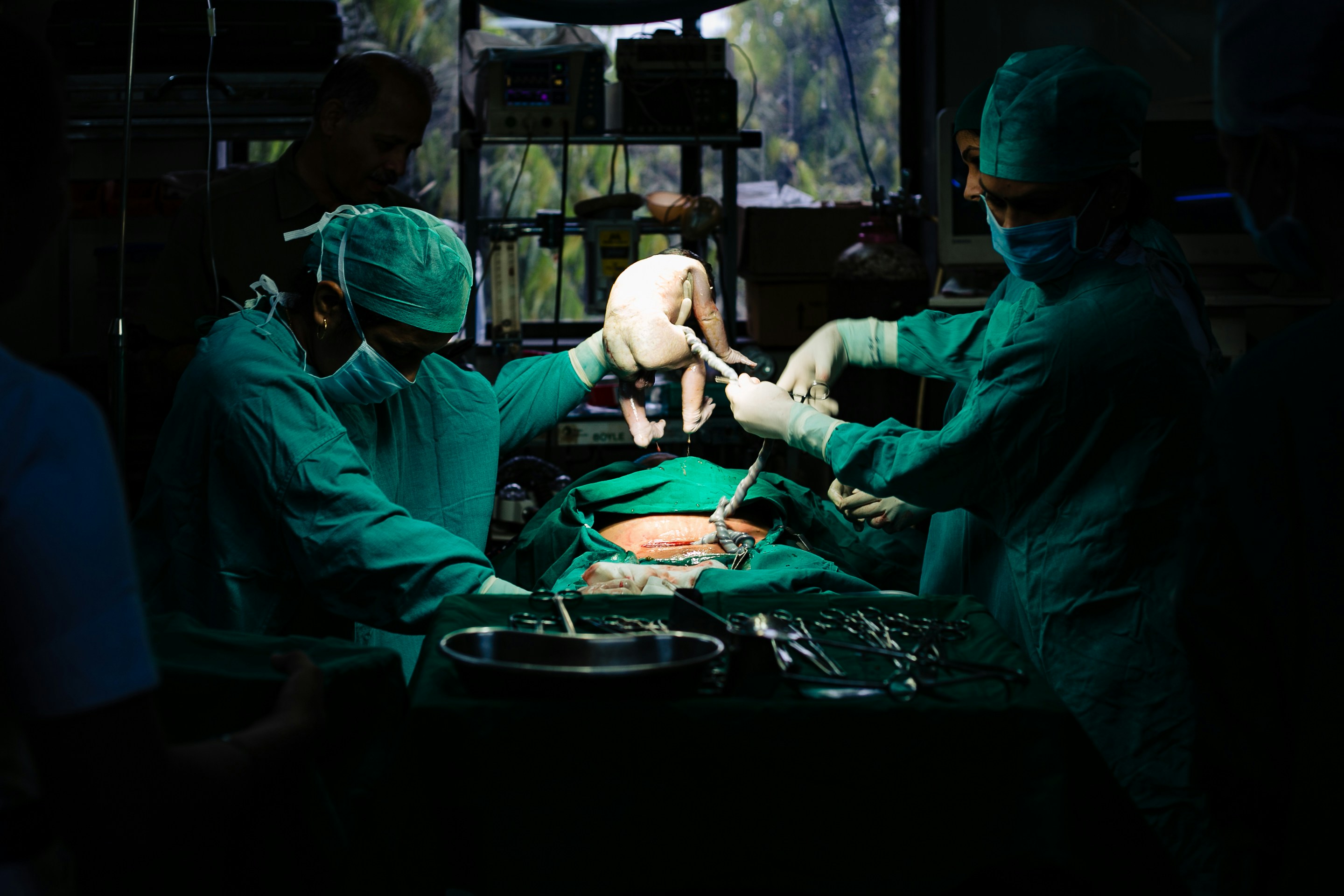04.02.2025
Childbirth - Cesarean section

Cesarean section is a birth performed as a surgical procedure. In this way, the baby is born through an incision in the mother's abdomen and uterus, instead of through a natural birth canal. This operation can be planned in advance or necessary as an emergency intervention if complications arise during childbirth. Although a cesarean section is often a safe option, it carries certain risks and requires a longer recovery period compared to a vaginal-natural birth.
Given that this method of birth isn't natural, there are several medical reasons why a cesarean section is recommended, the most common are:
Position of the baby - If the baby is in a breech or transverse position, vaginal delivery may be difficult or impossible, and in that case, a cesarean section is the best option.
Multiple pregnancy - When a pregnant woman has more than one fetus, she's carrying twins, triplets, or more babies, it's more likely that a c-section will be needed.
Fetal distress - This complication occurs during childbirth when the baby doesn't get enough oxygen, which affects its health. In this situation, a cesarean section may be necessary to avoid serious complications.
Previous C-section - Although some women may attempt a vaginal delivery after a C-section, in most cases a repeat C-section may be a safer option.
Placenta previa - A condition in pregnancy characterized by the growth of the placenta so that it covers the cervix, making vaginal delivery dangerous, because it is partially or completely closed.
Macrosomia - When a baby is significantly above average weight, a vaginal birth can carry a high risk of injury to both mother and child, making a C-section a safer option for both.
Advantages of cesarean section
Cesarean section has certain advantages, especially in cases where vaginal delivery carries a high risk for mother and baby. In a situation such as a complicated birth, a cesarean section reduces the risk of trauma to the baby, and ensures a reduced risk of injury to the baby.
Also, some studies suggest that women who give birth surgically, by c-section, have a lower risk of bladder control problems and pelvic organ prolapse compared to those who went through a natural birth. Another advantage is that this method of birth is planned in advance, bringing security and less stress, because the situation is predictable.
Risks and potential complications
Cesarean section is a relatively safe procedure, but it also carries certain risks, both for the mother and the baby. This procedure can lead to various infections of the wound, uterus, or urinary tract because this is a surgical procedure. Considering this and compared to vaginal delivery, recovery after cesarean section takes much longer, often including abdominal pain and limited mobility in the first weeks after delivery due to the wound itself.
Women who have had a C-section have a slightly higher risk of complications in subsequent pregnancies, including abnormal placentation, and babies born by C-section may have an increased risk of transient tachypnea (rapid breathing) after birth.
Postoperative recovery and care
Recovery from a cesarean section can take several weeks. In this case, doctors recommend rest and a gradual increase in activity, without sudden movements and lifting heavy objects. Proper wound care is essential during this period, in order to avoid infections and proper healing, and you should also pay attention to nutrition and sufficient fluid intake.
C-section is a demanding medical procedure that enables a safe delivery in situations where vaginal delivery isn't possible or is risky for mother and baby. Although it carries certain risks in some situations and a longer recovery period, in many cases its advantages outweigh all complications. That is why it is necessary to inform yourself and consult with your chosen doctor in time so that making a decision about the method of delivery is as easy as possible.
*This text is intended for informational purposes only. If you experience any symptoms, it is recommended that you seek advice from your doctor or a qualified healthcare professional.*
*Image taken from the site: https://unsplash.com/photos/man-in-green-long-sleeve-shirt-sitting-beside-man-in-white-long-sleeve-shirt-YSbvqo9YLHA
References
American College of Obstetricians and Gynecologists. (2020). Cesarean birth. https://www.acog.org/womens-health/faqs/cesarean-birth
World Health Organization. (2021). WHO recommendations on non-clinical interventions to reduce unnecessary caesarean sections. https://www.who.int/publications/i/item/9789241550338
Johns Hopkins Medicine. (n.d.). Cesarean section. Johns Hopkins Medicine. https://www.hopkinsmedicine.org/health/treatment-tests-and-therapies/cesarean-section
Your trusted partner in finding medical information. We offer access to reliable resources and make it simple for you to get in touch with qualified medical service providers. Our goal is to assist you in achieving optimal health through dependable information and ongoing support, whether it's advice, a physical examination, or expert consultation.